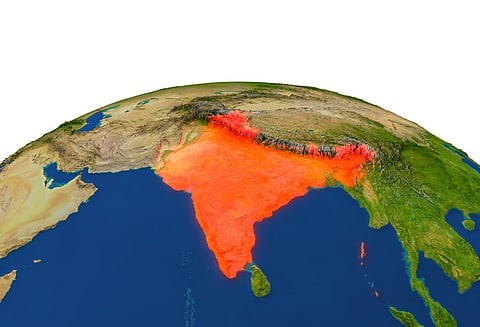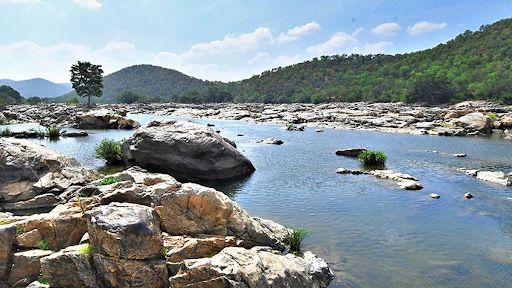




Source: THE KATHMANDU POST
Disclaimer: Copyright infringement not intended.
Indian Power Minister visited Nepal Arun-III Hydropower Project & Koshi Corridor transmission lines to enhance India-Nepal energy cooperation & review joint infrastructure projects.
|
Aspect |
Details |
|
Location |
Arun River, Sankhuwasabha District, Eastern Nepal |
|
Type |
Run-of- -river Hydropower Project |
|
Installed Capacity |
900 MW (4 × 225 MW units) |
|
Dam Structure |
70 meters high concrete gravity dam |
|
Head Race Tunnel (HRT) |
11.74 kilometers long |
|
Powerhouse |
Underground powerhouse located on left bank of Arun River |
|
Developer |
SJVN Arun-III Power Development Company (SAPDC) wholly owned subsidiary of SJVN Limited (India) |
|
Parent Company |
SJVN Limited a joint venture of Government of India & Government of Himachal Pradesh |
|
Development Model |
Build-Own-Operate-Transfer (BOOT) basis |
|
Operational Tenure Before Handover |
25 years (excluding approximately 5 years of construction) |
|
Free Power to Nepal |
21.9% of generated electricity will be provided free of cost to Nepal during 25 years of operation |
|
Cost of Construction |
Approximately Rs. 144 billion |
|
Ownership Transfer |
After 25 years, full ownership will be transferred to Government of Nepal |
|
Electricity Export |
Export from Dhalkebar (Nepal) to Muzaffarpur (India) via dedicated transmission lines |
|
Economic Significance |
Largest hydroelectric project in Nepal upon completion |
|
Strategic Significance |
Part of India neighborhood first policy |
|
Current Progress (April 2025) |
Structural works nearing completion; Electromechanical works officially launched; Transmission line components (Koshi Corridor) inaugurated |
|
Associated Transmission Projects |
Koshi Corridor 220 kV Transmission Line (Inaruwa–Basantapur–Baneshwor–Tumlingtar) |
|
Visit Significance (April 2025) |
Visited by Indian Minister for Power & Housing Affairs, Manohar Lal Khattar & Nepal's Minister for Energy, Dipak Khadka |
|
Aspect |
Details |
|
Project Name |
Koshi Corridor 220 kV Transmission Line |
|
Location |
Eastern Nepal (Koshi Province region) |
|
Components |
Transmission line sections: Inaruwa–Basantapur–Baneshwor–Tumlingtar |
|
Purpose |
Evacuation of hydropower from Arun River basin projects (like Arun-III, Lower Arun) |
|
Length of Transmission Line |
Approximately 106 kilometers |
|
Voltage Capacity |
220 kilovolts (kV) |
|
Funding & Support |
Indian financial & technical assistance under India’s development cooperation programs |
|
Significance for Nepal |
Major upgrade of local energy infrastructure |
|
Significance for India |
Strategic infrastructure to facilitate energy imports |
|
Additional Features |
Part of larger cross-border power grid integration |
|
Aspect |
Details |
|
Definition |
Use of clean & renewable energy projects (like hydropower) as a tool to strengthen diplomatic, economic & strategic ties between nations |
|
India-Nepal Model |
India supports hydropower development in Nepal (e.g., Arun-III, Lower Arun, Upper Karnali) |
|
Diplomatic Tools Used |
Concessional financing |
|
Strategic Benefits to India |
Strengthens goodwill with Nepal |
|
Benefits to Nepal |
Infrastructure modernization |
|
Global Relevance |
Clean energy diplomacy is becoming a major soft-power tool globally, aligning with international commitments like Paris Agreement |
|
Recent Developments |
Launch of India-Nepal Energy Dialogue mechanisms |
For more such articles, please refer to IAS GYAN
Sources: ANI
|
PRACTICE QUESTION Q. Discuss role of clean energy diplomacy in strengthening India-Nepal relations with special reference to Arun-III Hydropower Project & Koshi Corridor transmission initiatives. |







© 2025 iasgyan. All right reserved